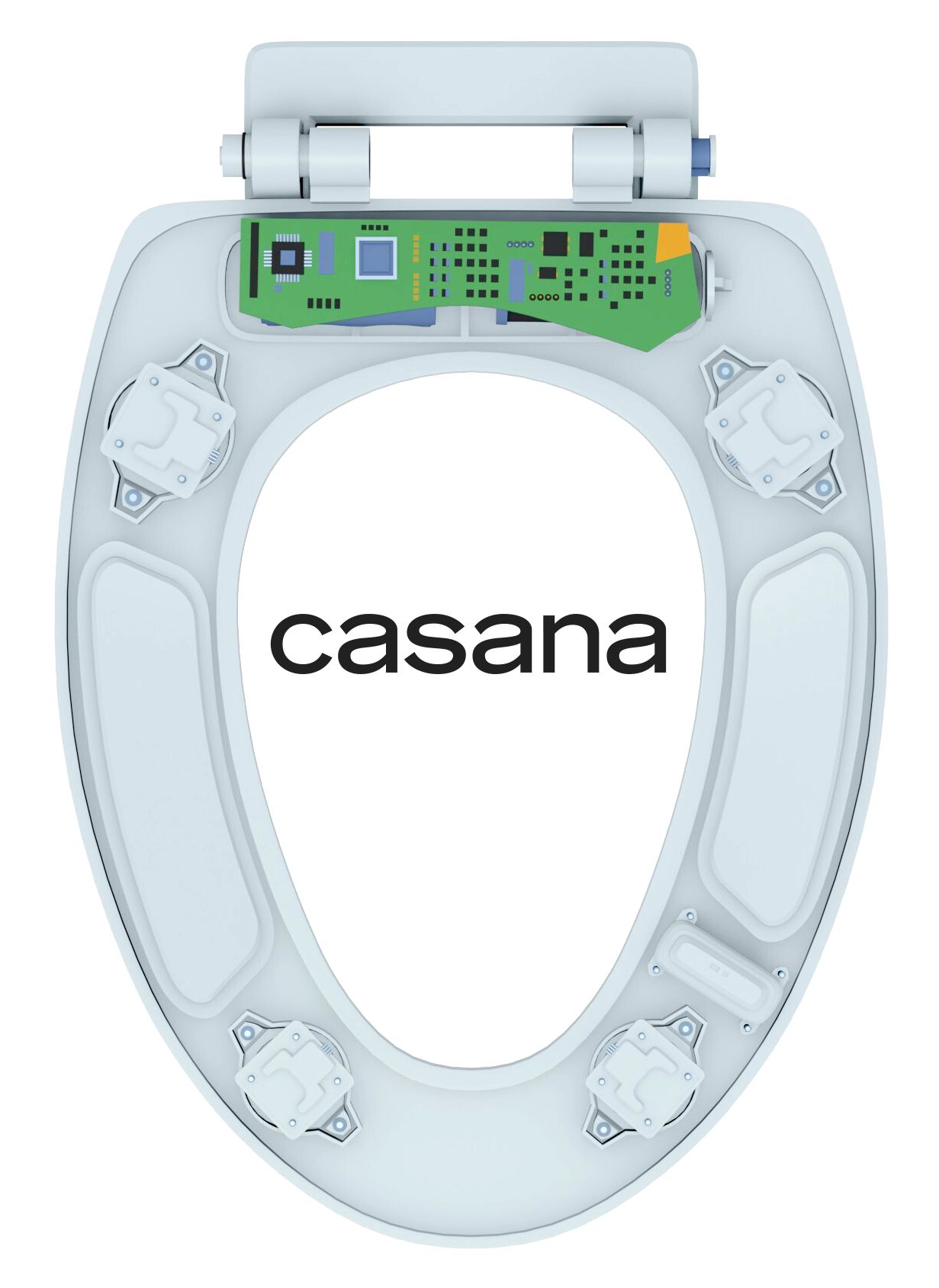Casana’s toilet seat can measure blood pressure, stroke volume, and oxygen levels
Nicholas Conn, as an engineering Ph.D. student at the Rochester Institute of Technology, started applying for funding to develop in-home medical monitoring devices in 2014 but only 7 years later, at 32 y.o., raised $14 million for his company, Casana, to develop this smart seat for America’s seniors to solve a problem many doctors face with many patients: getting them to comply with recording home measurements. Remembering to write down weight or blood pressure or oxygen levels on a daily basis at home is hard, so with a toilet seat, there are no wires, no charging stations, and no forgetting.
With this funding, the Rochester, New York-based startup is taking aim at reducing the annual $219 billion spent on cardiovascular disease in the United States through regular monitoring that can help catch problems earlier and keep patients healthier, especially in the over 65 demographic.
Designing a smart toilet has pros and cons: toilet seats have a wide surface, which means there’s less need for expensive miniaturization such as sensors you find in smartphones for example. On the other hand, the buttocks aren’t the easiest part of the body to read.
“The initial data that comes out if you just strap electrodes to the bottom side of somebody is not great”, says McChord, Casana’s CEO. “It’s only through incredible amounts of algorithmic filtering where you get the medical-grade data that’s actually valuable”.
This is where founder and chief scientific officer Conn’s after years of research come in. He developed algorithms that separate out medical measurements from the background noise, whose details have been published in the Journal of Medical Internet Research mHealth and uHealth. Those 2 papers demonstrated his prototype toilet seat could measure blood pressure, stroke volume, and blood oxygenation with clinical-grade accuracy consistent with an echocardiogram, or an ultrasound of the heart.
According to the CDC, in the United States, one person dies every 36 seconds from cardiovascular disease. Casana’s first target is heart failure, which affects more than 6.2 million Americans and aside from a heart transplant, there’s no cure for this condition, it can only be managed.
So, one key metric is stroke volume: the amount of blood that a person’s heart pumps in each beat. Currently, the most common way to measure this is via an echocardiogram, which must be performed in a physician’s office. Casana’s goal is for doctors to be able to prescribe the toilet seat, which can monitor stroke volume at home so that doctors will be able to intervene long before symptoms by keeping an eye on the data provided by this device.
In addition, Casana also thought of when users may have guests visiting. Your butt when paired with weight, posture, heart rhythm, and other measurements, is like a unique identifier, meaning the toilet seat would sense the difference between users. In the end, the hope is the data collected from the toilet seat will ultimately be able to help inform clinical decision making, like whether to adjust a patient’s medication depending on the vital measurements being collected in real-time.
Smart toilet seats will definitely be useful but this idea will enhance smart toilets, more than classic toilets, which will surely integrate these new features in their already wide array of functions making them increasingly complete and able to prevent ever more potential health problems.
Source forbes.com

